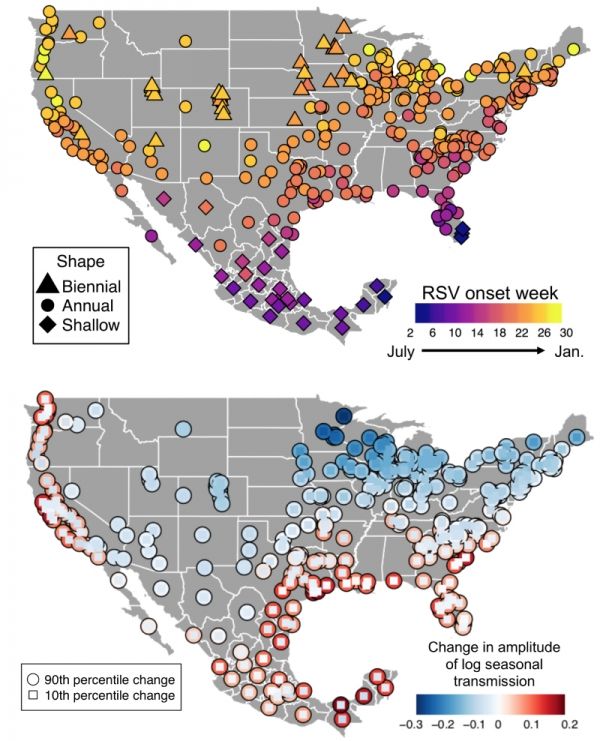One of the first studies to examine the effect of climate change on diseases such as influenza that are transmitted directly from person to person has found that higher temperatures and increased rainfall could make outbreaks less severe but more common, particularly in North America.
Princeton University-led researchers studied how climate conditions influence annual outbreaks of respiratory syncytial virus (RSV) in the United States and Mexico, where the common pathogen can cause serious respiratory infections. The researchers created a model of the virus’ peaks during the year using county-level observations of RSV infection from the United States and state-level data from Mexico.
The researchers reported in the journal Nature Communications that RSV epidemics are subject to different climatic factors depending on location. Fluctuations in humidity are the driving force behind the virus’ spread in temperate northern locations, while RSV epidemics track the rainy season in tropical locales. The virus is governed by both humidity and rainfall in “crossover” locations such as Mexico’s Sinaloa state that typically experience two epidemic peaks each year.
Read more at Princeton University
Image: RSV infections may become more common in areas such as the northern United States that currently experience outbreaks seasonally or every two years. The top map shows the present-day timing of RSV epidemics in the United States and Mexico. Under climate change (bottom map), epidemics could become more severe in tropical areas due to increased rainfall, while greater humidity in temperate regions could reduce the intensity of single outbreaks as infections become more common throughout the year. (Images courtesy of Rachel Baker, Princeton Environmental Institute)


